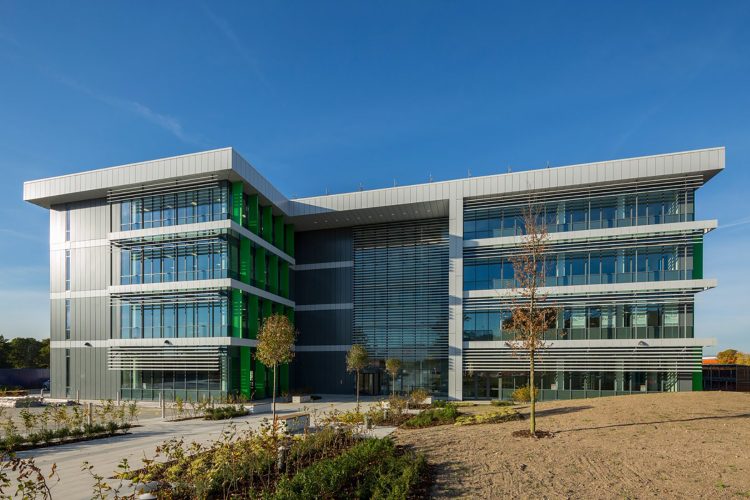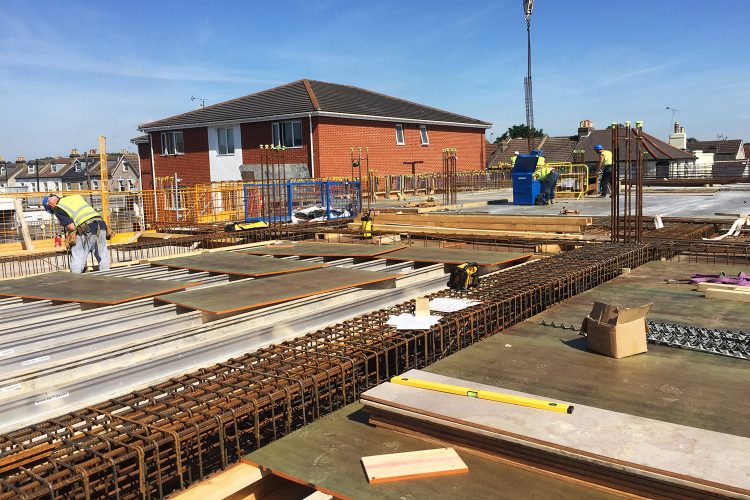When it comes to preparing designs for a project, an engineer’s role is to find the most efficient and cost-effective solution for a client which answers all their needs, as outlined in the brief. Based on extensive site investigations including load tests, geotechnical surveys and even historical archive research, the engineering team will put together plans which they believe will work best. The client agrees on one, the decision is communicated to the construction team, and work begins on site.
However, in engineering – as in life – new factors can come into play which require a change of the initial plans. That’s why it’s important to have a design team with the experience, creativity and flexibility necessary to adapt and re-design in order to perfectly suit the client’s needs.
Such was the case with the construction of our Gatwick Diamond project. The structure was originally conceived by the client, Surrey County Council, as an RC structure but due to subcontractor availability and programme this option was no longer feasible. Lyons O’Neill were called in to progress the scheme as a steel alternative and use our expertise to ensure this alternative route did not lead to a lower quality building. We developed a different design which benefited from the flat slab approach of the original concrete solution, yet which worked well with the speed of the steel frame construction. This design substitution didn’t mean a quality reduction, however, and the building also won a LABC Building Excellence Award for the Best Large Commercial Project in the South East Region, in 2017.
Sometimes a second look can reveal greater design possibilities. Another project which required a new design plan was West Thornton Primary School.
We were invited onto the project to complete a technical review of the existing proposal, and through this discovered that a better quality building could be delivered – but this required a complete re-design. There were several new options to be considered and it was through working collaboratively with our partners that we narrowed it down to the best one. Our final design involved using a ground bearing raft, which had the benefits of significant cost savings, as well as reducing the impact on neighbouring properties. We were also able to design the frame itself to adapt to the unique and creative teaching methodology used by the school.
An engineer’s job requires great technical knowledge but creativity and the ability to think beyond the obvious are also crucial to delivering excellent projects and there’s a skill to making Plan B even better than Plan A.


